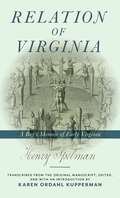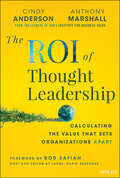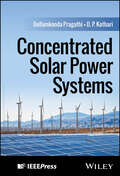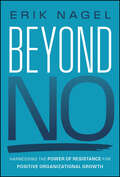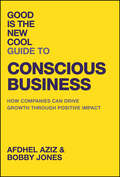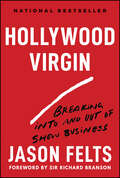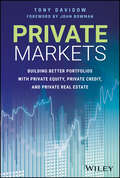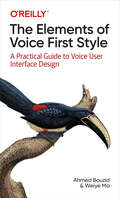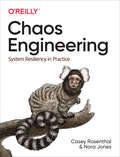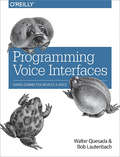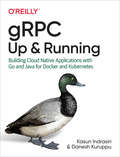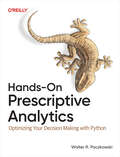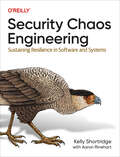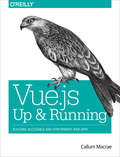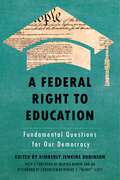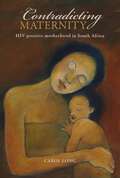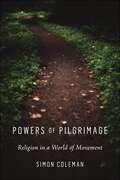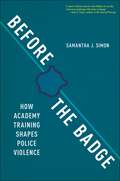- Table View
- List View
Relation of Virginia: A Boy's Memoir of Life with the Powhatans and the Patawomecks
by Henry SpelmanA memoir of one of America’s first adventurers, a young boy who acted as a link between the Jamestown colonists and the Patawomecks and Powhatans.“Being in displeasure of my friends, and desirous to see other countries, after three months sail we come with prosperouswinds in sight of Virginia.” So begins the fascinating tale of Henry Spelman, a 14 year-old boy sent to Virginia in 1609. One of Jamestown’s early arrivals, Spelman soon became an integral player, and sometimes a pawn, in the power struggle between the Chesapeake Algonquians and the English settlers. Shortly after he arrived in the Chesapeake, Henry accompanied another English boy, Thomas Savage, to Powhatan’s capital and after a few months went to live with the Patawomeck chief Iopassus on the Potomac. Spelman learned Chesapeake Algonquian languages and customs, acted as an interpreter, and knew a host of colonial America’s most well-known figures, from Pocahontas to Powhatan to Captain John Smith. This remarkable manuscript tells Henry’s story in his own words, and it is the only description of Chesapeake Algonquian culture written with an insider’s knowledge. Spelman’s account is lively and insightful, rich in cultural and historical detail. A valuable and unique primary document, this book illuminates the beginnings of English America and tells us much about how the Chesapeake Algonquians viewed the English invaders. It provides the first transcription from the original manuscript since 1872.
The ROI of Thought Leadership: Calculating the Value that Sets Organizations Apart
by Cindy Anderson Anthony MarshallThe power of corporate thought leadership, finally quantified through expansive rigorous empirical research The ROI of Thought Leadership: Calculating the Value that Sets Organizations Apart reveals the findings of rigorious research conducted by authors Anthony Marshall and Cindy Anderson, leaders at IBM's Institute for Business Value (IBV), where they surveyed more than 4,000 C-level executives—half CEOs, half CFOs, CSCOs, CTOs and CIOs—to ask about their consumption of thought leadership content and the influence it has on their business purchase decisions and investments, as well as the use of generative AI in the production and consumption of thought leadership. The book also includes tools such as an “value calculator” that empowers every reader to assess the potential return for their specific organization. This book reveals the surprising findings of the research and answers questions, such as: How many people consume thought leadership and in what form? How many CEOs and executives say they have made a purchase decision? How much corporate spending is driven by thought leadership? How are organizations that produce thought leadership materials perceived and how are they rewarded? The ROI of Thought Leadership: Calculating the Value that Sets Organizations Apart is an essential read for all business leaders seeking to finally understand the true business value of thought leadership initiatives.
Markets and Momentum: How Profiling Gives Traders an Advantage
by James F. Dalton Robert B. DaltonElevate your trading strategy with actionable market insights from an industry pioneer In Markets & Momentum: How Profiling Gives Traders an Advantage, James F. Dalton and co-author Robert B. Dalton dramatically expand on their revolutionary first book, Markets in Profile. Summarizing a lifetime of experience—from formative memberships on the CBOE and CBOT to his role as UBS Director of Hedge Fund Research—Jim challenges traders to recognize that market-understanding must be balanced with self-understanding. Jim’s deep market savvy is complimented by Rob’s engaging prose that adds a wealth of insight about the powerful influence of unexamined emotions, impulses, and habits on your trading success. Jim promotes trader education through Jim Dalton Trading (jimdaltontrading.com), along with his partners Jennifer Loh and Raghu Rajput, driven by the knowledge that the only reliable, objective, actionable information is market-generated. This information is scientifically organized via the Market Profile, which is simply a contextual organization of time, price, and volume—the core components of any financial transaction. Markets & Momentum offers: Deep dives into issues that lead more than 90% of day traders to lose money, including fading trend days, FOMO, doubling down on losing trades, and failing to let profits run. Strategies for minimizing the influence of news hype and analysis overload in order to remain focused on the only information that matters. Techniques for understanding your own emotional and intuitive reactions, and learning to avoid making impulsive decisions. This book is ideal for day and short-term traders, and for longer-term investors seeking to improve trade entries and exits. Jim Dalton’s trading insights are supported by six decades of learning directly from the markets, as well as from his wide base of educational clients. Markets & Momentum is a must-read for traders looking for guidance on developing the insights and skills necessary for conquering the short-term market.
Undisrupted: Leadership Essentials on Business Transformation, Profitability, and Future Readiness
by Ian KhanReady your organization for the future—regardless of what it may bring—with one of the world's foremost business strategists In Undisrupted: Leadership Essentials on Creating a Future-Ready Organiztion, Ian Khan, a distinguished futurist, filmmaker, and author delivers a compelling message that challenges the conventional approach to future-proofing businesses with technology, offering a fresh, comprehensive strategy for thriving in an uncertain future. In the book, Khan introduces the innovative Future Readiness Score™, a tool developed through his extensive research and experience with over 750 organizations. This score assesses a company's ability to adapt to unforeseeable changes, preparing them to handle both challenges and opportunities. The book elaborates on the seven pillars of future readiness—Engagement, Learning, Collaboration, People, Culture, Innovation, and Execution—demonstrating how to safeguard your company against adverse events and capitalize on positive ones. You'll also discover: The proprietary Future Readiness Score™ to evaluate and enhance organizational adaptability Practical insights into the seven pillars of future readiness for robust business strategy Strategies to not only withstand negative events but also harness positive opportunities Undisrupted an essential guide for business leaders, including managers, executives, entrepreneurs, and strategists. It is also invaluable for consultants serving various businesses. This book is a crucial resource for anyone aiming to navigate and succeed in the ever-evolving business landscape of tomorrow.
Concentrated Solar Power Systems
by D. P. Kothari Bellamkonda PragathiFollow the performance assessment tools and methods currently used for concentrated solar power technology (CSP) in this unique, single source overview The search for renewable energy sources and methods for harnessing them is perhaps the most significant challenge of the twenty first century, which faces the potentially existential crises of global climate change. Concentrated solar power, or CSP, has the potential to revolutionize energy production. Its integration of thermal energy and its capacity to work with traditional power generation cycles make it an ideal tool for a newly sustainable world. Concentrated Solar Power Systems is an advanced-level book offering both theoretical and practical perspectives on CSP. Its thorough overview of this technology includes the foundational scientific principles, system design and development, and growing applications. It offers a one-stop source for the performance assessment tools and methods currently deployed in the area of concentrated solar power. Readers will also find: Case studies throughout showing CSP harnessed to meet real energy needs Detailed discussion of topics including site selection, feasibility analysis, environmental assessments, and more Analysis of specific technologies including linear Fresnel reflectors, parabolic troughs, concentrating photovoltaic systems, and many others Concentrated Solar Power Systems is ideal for students and researchers involved or interested in the design, production, development, optimization, and application of CSP technology.
Beyond No: Harnessing the Power of Resistance for Positive Organizational Growth
by Erik NagelStart viewing resistance as something beneficial instead of an inconvenience that must be eliminated Beyond No: Harnessing the Power of Resistance for Organizational Growth is a thought-provoking exploration of the concept of resistance—something that is bound to arise within every organization in response to new projects, policies, or initiatives. Rather than seeing resistance as an inconvenience that needs to be eliminated, this book invites readers to take a new approach to different types of resistance, both hidden and obvious, and instead view resistance as a guiding light to discover objective differences, dissatisfaction, criticism of procedures, or different assessments or values. This book contains a wealth of real stories from a wide variety of business leaders, detailing situations where resistance was encountered, solutions that were implemented, and their outcomes. Readers will also learn about: Shortcuts that lead to dead ends when managing resistance, including thinking “man does not want to change” and “one third is always against it anyways” Explanatory models behind resistance, including emotional events, attempts at domination, normative control, and expression of a damaged relationship Principles to productively manage resistance, including commitment, dignity, right to dissent, learning, and mindfulness Beyond No earns a well-deserved spot on the bookshelves of all business leaders, executives, and managers seeking to achieve excellence in leadership through a thoughtful approach to resistance instead of relying on ineffective command-and-control tactics.
Good is the New Cool Guide to Conscious Business: How Companies Can Drive Growth Through Positive Impact
by Bobby Jones Afdhel AzizHow brands can evolve to win with conscious consumers In the Good is the New Cool Guide to Conscious Business: How Companies Can Drive Growth Through Positive Impact, conscious capitalism experts Afdhel Aziz and Bobby Jones deliver all of the knowledge and tools needed to discover, design, and deploy sustainable and inclusive growth within any organization. This book draws on stories, insights, and case studies from leaders at successful purpose-driven corporations around the world, from Fortune 500 giants like Unilever and Procter to tech disruptors like Tesla, Microsoft, and Airbnb, as well as beloved brands like Lego, Adidas, and Patagonia. In the last decade, corporations were required to meet the digital age's challenges and opportunities. Today, corporations must meet the purpose-based demands of consumers, employees, and investors—or get left behind. In this book, readers will learn about: The seven qualities of an inspiring and motivating purpose statement Harnessing nine principles of purpose, including “Purpose doesn't have to be political,” “Purpose is about putting your money where your mission is,” and “Purpose is about measuring what you treasure” Understanding the rise of impact investors and measuring the ROI of purpose-based corporate initiatives Thought-provoking, accessible, and inspiring, the Good Is the New Cool Guide to Conscious Business earns a well-deserved spot on the bookshelves of all C-suite business leaders seeking a new vision to transform their organizations, and the world, for the better.
Hollywood Virgin: Breaking Into and Out of Show Business
by Jason FeltsHollywood Virgin is more than a tell-all memoir about the business of show business from the founder and CEO of Virgin's entertainment company—it's about hustle, risk-taking, sudden success, insider realizations, self-discovery, breakdowns, and walking away before you lose everything… alongside plenty of behind-the-screen shockers, celebrity stories, and yes, a bathrobe or two. Growing up in small-town Texas, Jason Felts dreamed of being in Hollywood. He made his way to California, started his own production company at 23, was named to Variety's “Top 10 to Watch” list, rubbed elbows with famous faces daily, and rose quickly to build and lead a multi-million dollar entertainment company for Virgin, one of the world's most respected brands—so why did he walk away at such a young age? Jason recounts how he diligently pursued opportunities in the entertainment industry, quickly working his way up from small-time, thankless jobs serving the most powerful, to becoming a key industry player himself, making incredible things happen behind the scenes that no one ever knew—until now. Join him as he spills never-told-before tea, sharing how he lost his Hollywood virginity by: Creating and producing the first show that put a Kardashian on TV Turning access into authentic relationships and partnerships with stars such as Jessica & Ashlee Simpson, will.i.am, Justin Berfield, among many others The origin story behind founding and running an award winning Virgin branded company—and having Sir Richard Branson as a mentor Pitching films and shows with names such Halle Berry, Courteney Cox, and Oliver Stone Being tapped as the youngest CEO (only after Branson himself) to ever run a Virgin company Coming out of the closet to take action publicly as a founding board member of the PULSE foundation in the aftermath of the Orlando nightclub shooting Planning and joining the Obama's on their first post-presidency vacation the day they left the White House, and taking the former President's life changing advice Alongside more misadventures, hijinks, hits and flops, and hiding from bad headlines… Hollywood Virgin is Jason's journey of discovering what happens when you achieve more than you imagined and find that the excess isn't enough. With no stone unturned, this raw and real insider look provides a peek behind the scenes of an industry very few really know. Jason elegantly removes the concealer off the powerful, fake, and dishonest power players at the same time he equally shines light on the authentic, selfless, or lesser known stories in Hollywood. For all those working hard towards fulfilling their dreams, learn and be inspired from his anything-but-straightforward career.
Private Markets: Building Better Portfolios with Private Equity, Private Credit, and Private Real Estate
by Tony DavidowComprehensive guide to the private market, covering allocating capital, portfolio construction, product evolution, and more Written in accessible language, Private Markets: Building Better Portfolios with Private Equity, Private Credit, and Private Real Estate addresses the challenges and opportunities with investing in the private markets, including understanding the merits of the asset classes—private equity, private credit, and private real estate—product evolution, and the structural tradeoffs, and how to incorporate these versatile and valuable tools in client portfolios. This book leverages Tony Davidow's 40 years of experience working directly with advisors and high-net-worth families/ ultra-high-net-worth families. Davidow is an award-winning author and has also been recognized for building Franklin Templeton's alternative education program (2023 recipient of the “Wealthie”). Topics discussed in this book include: How private markets can be used to increase the likelihood of achieving client goals? Examining the historical risk and return characteristics of the private markets relative to their public market equivalents. Exploring the benefits of private markets including the potential for higher returns, an alternative source of income, diversification, and hedging against the impact of inflation. Now that private markets are available to a broader group of investors outside of institutions and family offices, Private Markets: Building Better Portfolios with Private Equity, Private Credit, and Private Real Estate is an essential resource for all financial advisors and individual investors who are considering allocating capital to these once elusive investments.
The Elements of Voice First Style: A Practical Guide to Voice User Interface Design
by Ahmed Bouzid Weiye MaIf you're a new or experienced designer of conversational voice first experiences, this handy reference provides actionable answers to key aspects of eyes-busy, hands-busy, voice-only user interfaces. Designed as a companion to books about conversational voice design, this guide includes important details regarding eyes-free, hands-free, voice-only interfaces delivered by Amazon Echo, Google Nest, and a variety of in-car experiences.Authors Ahmed Bouzid and Weiye Ma provide far-field voice best practices and recommendations in a manner similar to The Elements of Style, the popular American English writing style guide. Like that book, The Elements of Voice First Style provides direct, succinct explanations that focus on the essence of each topic. You'll find answers quickly without having to spend time searching through other sources.With this guide, you'll be able to:Craft just the right language to enable your voicebot to effectively communicate with humansCreate conversational voice interfaces that are robust enough to handle errors and failuresDesign highly usable conversational voice interfaces by paying attention to small details that can make or break the experienceBuild a design for a voice-only smart speaker that doesn't require customers to use their eyes or hands
Security and Microservice Architecture on AWS: Architecting and Implementing a Secured, Scalable Solution
by Gaurav RajeSecurity is usually an afterthought when organizations design microservices for cloud systems. Most companies today are exposed to potential security threats, but their responses are often more reactive than proactive. This leads to unnecessarily complicated systems that are hard to implement and even harder to manage and scale. Author Gaurav Raje shows you how to build highly secure systems on AWS without increasing overhead.Ideal for cloud solution architects and software developers with AWS experience, this practical book starts with a high-level architecture and design discussion, then explains how to implement your solution in the cloud while ensuring that the development and operational experience isn't compromised. By leveraging the AWS Shared Responsibility Model, you'll be able to:Develop a modular architecture using microservices that aims to simplify compliance with various regulations in finance, medicine, and legal servicesIntroduce various AWS-based security controls to help protect your microservices from malicious actorsLeverage the modularity of the architecture to independently scale security mechanisms on individual microservicesImprove the security posture without compromising the autonomy or efficiency of software development teams
Chaos Engineering: System Resiliency in Practice
by Casey Rosenthal Nora JonesAs more companies move toward microservices and other distributed technologies, the complexity of these systems increases. You can't remove the complexity, but through Chaos Engineering you can discover vulnerabilities and prevent outages before they impact your customers. This practical guide shows engineers how to navigate complex systems while optimizing to meet business goals.Two of the field's prominent figures, Casey Rosenthal and Nora Jones, pioneered the discipline while working together at Netflix. In this book, they expound on the what, how, and why of Chaos Engineering while facilitating a conversation from practitioners across industries. Many chapters are written by contributing authors to widen the perspective across verticals within (and beyond) the software industry.Learn how Chaos Engineering enables your organization to navigate complexityExplore a methodology to avoid failures within your application, network, and infrastructureMove from theory to practice through real-world stories from industry experts at Google, Microsoft, Slack, and LinkedIn, among othersEstablish a framework for thinking about complexity within software systemsDesign a Chaos Engineering program around game days and move toward highly targeted, automated experimentsLearn how to design continuous collaborative chaos experiments
Programming Voice Interfaces
by Walter Quesada Bob LautenbachGet a step-by-step guide for developing voice interfaces for applications and devices connected to the Internet of Things. By allowing consumers to use natural human interactions, you can avoid awkward methods of input and interactivity to provide them with elevated user experiences. This practical book is ideal for software engineers who build applications for the Web, smartphones, as well as embedded systems that dominate the IoT space.Integrate voice interfaces with internet connected devices and sensorsLearn how to integrate with existing voice interfacesUnderstand when to use a voice over other Natural User Interface technologiesBuild a prototype with tools such as Raspberry Pi, solderless breadboards, jumper cables, sensors, Arduino, Visual Studio, and other toolsUse cloud services such as Azure and AWS to integrate voice with your existing or new web service end-points
gRPC: Building Cloud Native Applications with Go and Java for Docker and Kubernetes
by Kasun Indrasiri Danesh KuruppuGet a comprehensive understanding of gRPC fundamentals through real-world examples. With this practical guide, you’ll learn how this high-performance interprocess communication protocol is capable of connecting polyglot services in microservices architecture, while providing a rich framework for defining service contracts and data types.Complete with hands-on examples written in Go, Java, Node, and Python, this book also covers the essential techniques and best practices to use gRPC in production systems. Authors Kasun Indrasiri and Danesh Kuruppu discuss the importance of gRPC in the context of microservices development.
Hands-On Prescriptive Analytics: Optimizing Your Decision Making with Python
by Walter R. PaczkowskiBusiness decisions in any context—operational, tactical, or strategic—can have considerable consequences. Whether the outcome is positive and rewarding or negative and damaging to the business, its employees, and stakeholders is unknown when action is approved. These decisions are usually made under the proverbial cloud of uncertainty.With this practical guide, data analysts, data scientists, and business analysts will learn why and how maximizing positive consequences and minimizing negative ones requires three forms of rich information: Descriptive analytics explores the results from an action—what has already happened. Predictive analytics focuses on what could happen. The third, prescriptive analytics, informs us what should happen in the future.While all three are important for decision-makers, the primary focus of this book is on the third: prescriptive analytics. Author Walter R. Paczkowski, Ph.D. shows you:The distinction among descriptive, predictive, and prescriptive analyticsHow predictive analytics produces a menu of action optionsHow prescriptive analytics narrows the menu of action optionsThe forms of prescriptive analytics: eight prescriptive methodsTwo broad classes of these methods: non-stochastic and stochasticHow to develop prescriptive analyses for action recommendationsWays to use an appropriate tool-set in Python
Understanding DeFi: The Roles, Tools, Risks, and Rewards of Decentralized Finance
by Alexandra DamskerDecentralized finance (DeFi) is a rapidly growing field in fintech, having grown from $700 million to $100 billion over the past three years alone. But the lack of reliable information makes this area both risky and murky. In this practical book, experienced securities attorney Alexandra Damsker explains DeFi's role in both blockchain and finance.Ideal for developers looking to build decentralized applications (DApps), this book compares DeFi to traditional bank-led fintech and explains why DeFi is exploding in interest and popularity. You'll explore the growing array of DApps and platforms in various categories, including their benefits and drawbacks, and learn how DeFi tools work together from the perspective of both users and developers.With this book, you will:Learn how DeFi fits into the blockchain and fintech worldsUnderstand why it's important to move beyond the banking systemExplore the tools for building a useful, functional DeFi applicationLearn the risks, benefits, regulatory concerns, and unresolved issues in this nascent and fast-growing industrySee which technologies are well-positioned to be incorporated into DeFi blockchains in the near futureAssess your own risk level to determine which strategies are most appropriate
Security Chaos Engineering: Sustaining Resilience in Software and Systems
by Kelly ShortridgeCybersecurity is broken. Year after year, attackers remain unchallenged and undeterred, while engineering teams feel pressure to design, build, and operate "secure" systems. Failure can't be prevented, mental models of systems are incomplete, and our digital world constantly evolves. How can we verify that our systems behave the way we expect? What can we do to improve our systems' resilience? In this comprehensive guide, authors Kelly Shortridge and Aaron Rinehart help you navigate the challenges of sustaining resilience in complex software systems by using the principles and practices of security chaos engineering. By preparing for adverse events, you can ensure they don't disrupt your ability to innovate, move quickly, and achieve your engineering and business goals. Learn how to design a modern security programMake informed decisions at each phase of software delivery to nurture resilience and adaptive capacityUnderstand the complex systems dynamics upon which resilience outcomes dependNavigate technical and organizational trade-offsthat distort decision making in systemsExplore chaos experimentation to verify critical assumptions about software quality and securityLearn how major enterprises leverage security chaos engineering
Getting Started with the micro: Coding and Making with the BBC's Open Development Board
by Wolfram DonatThe micro:bit, a tiny computer being distributed by the BBC to students all over the UK, is now available for anyone to purchase and play with. Its small size and low power requirements make it an ideal project platform for hobbyists and makers. You don't have to be limited by the web-based programming solutions, however: the hardware on the board is deceptively powerful, and this book will teach you how to really harness the power of the micro:bit. You'll learn about sensors, Bluetooth communications, and embedded operating systems, and along the way you'll develop an understanding of the next big thing in computers: the Internet of Things.
Vue.js: Building Accessible and Performant Web Apps
by Callum MacraeGet a brisk introduction to building fast, interactive single-page web applications with Vue.js, the popular JavaScript framework that organizes and simplifies web development. With this practical guide, you’ll quickly move from basics to custom components and advanced features—including JSX, the JavaScript syntax extension.Author Callum Macrae shows you how to use the most useful libraries in the Vue ecosystem, such as vue-router for routing, vuex for state management, and vue-test-utils for testing. If you’re a frontend developer familiar with JavaScript, HTML, and CSS, this book will show you how to develop a fully featured web application using Vue.Learn Vue.js basics, including its use of templates to display data on a pageSet up Vue projects from scratch, or use vue-cli to set up from a templateCreate a maintainable codebase by splitting code into self-contained componentsDiscover how Vue.js works with CSS to style your websites and applicationsUse render functions and JSX, rather than templates, to determine what Vue displaysControl how code is executed and displayed with vue-routerManage state in one centralized place with the Vuex libraryWrite unit tests to ensure your Vue components don’t break in the future
Being Watched: Legal Challenges to Government Surveillance
by Jeffrey L. VagleA riveting history of the Supreme Court decision that set the legal precedent for citizen challenges to government surveillance The tension between national security and civil rights is nowhere more evident than in the fight over government domestic surveillance. Governments must be able to collect information at some level, but surveillance has become increasingly controversial due to its more egregious uses and abuses, which tips the balance toward increased—and sometimes total—government control.This struggle came to forefront in the early 1970s, after decades of abuses by U.S. law enforcement and intelligence agencies were revealed to the public, prompting both legislation and lawsuits challenging the constitutionality of these programs. As the plaintiffs in these lawsuits discovered, however, bringing legal challenges to secret government surveillance programs in federal courts faces a formidable obstacle in the principle that limits court access only to those who have standing, meaning they can show actual or imminent injury—a significant problem when evidence of the challenged program is secret. In Being Watched, Jeffrey L. Vagle draws on the legacy of the 1972 Supreme Court decision in Laird v. Tatum to tell the fascinating and disturbing story of jurisprudence related to the issue of standing in citizen challenges to government surveillance in the United States. It examines the facts of surveillance cases and the reasoning of the courts who heard them, and considers whether the obstacle of standing to surveillance challenges in U.S. courts can ever be overcome. Vagle journeys through a history of military domestic surveillance, tensions between the three branches of government, the powers of the presidency in times of war, and the power of individual citizens in the ongoing quest for the elusive freedom-organization balance. The history brings to light the remarkable number of similarities among the contexts in which government surveillance thrives, including overzealous military and intelligent agencies and an ideologically fractured Supreme Court. More broadly, Being Watched looks at our democratic system of government and its ability to remain healthy and intact during times of national crisis.A compelling history of a Supreme Court decision and its far-reaching consequences, Being Watched is essential reading for anyone seeking to understand the legal justifications for—and objections to—surveillance.
Market Cities, People Cities: The Shape of Our Urban Future
by Michael Oluf Emerson Kevin T. SmileyAn in-depth look at the urban environments of Houston and CopenhagenHow are modern cities changing, and what implications do those changes have for city inhabitants? What kinds of cities do people want to live in, and what cities do people want to create in the future? Michael Oluf Emerson and Kevin T. Smiley argue that western cities have diverged into two specific and different types: market cities and people cities. Market cities are focused on wealth, jobs, individualism, and economic opportunities. People cities are more egalitarian, with government investment in infrastructure and an active civil society. Analyzing the practices and policies of cities with two separate foci, markets or people, has substantial implications both for everyday residents and future urban planning and city development. Market Cities, People Cities examines these diverging trends through extended case studies of Houston, Texas as a market city and Copenhagen, Denmark as a people city, and draw on data from nearly 100 other cities. Emerson and Smiley track the history of how these two types of cities have been created, and how they function for governments and residents in various ways, examining transportation, the environment, and inequality, among other topics. Market Cities, People Cities also outlines the means and policies cities can adapt in order to become more of a market- or people-focused city. The afterword reflects on Houston’s response to the devastation caused by Hurricane Harvey in 2017. As twenty-first century cities diverge, Market Cities, People Cities is essential for urban dwellers anxious to be active in their pursuit of their best cities, as well as anyone looking to the future of cities around the world.
A Federal Right to Education: Fundamental Questions for Our Democracy
by Kimberly Jenkins RobinsonHow the United States can provide equal educational opportunity to every child The United States Supreme Court closed the courthouse door to federal litigation to narrow educational funding and opportunity gaps in schools when it ruled in San Antonio Independent School District v. Rodriguez in 1973 that the Constitution does not guarantee a right to education. Rodriguez pushed reformers back to the state courts where they have had some success in securing reforms to school funding systems through education and equal protection clauses in state constitutions, but far less success in changing the basic structure of school funding in ways that would ensure access to equitable and adequate funding for schools. Given the limitations of state school funding litigation, education reformers continue to seek new avenues to remedy inequitable disparities in educational opportunity and achievement, including recently returning to federal court. This book is the first comprehensive examination of three issues regarding a federal right to education: why federal intervention is needed to close educational opportunity and achievement gaps; the constitutional and statutory legal avenues that could be employed to guarantee a federal right to education; and, the scope of what a federal right to education should guarantee. A Federal Right to Education provides a timely and thoughtful analysis of how the United States could fulfill its unmet promise to provide equal educational opportunity and the American Dream to every child, regardless of race, class, language proficiency, or neighborhood.
Contradicting Maternity: HIV-positive motherhood in South Africa
by Carol LongDrawing on rich and poignant interviews with mothers who have been diagnosed HIV-positive, Contradicting Maternity provides a rare perspective of motherhood from the mother’s point of view. Whereas motherhood is often assumed to be a secondary identity compared to the central figure of the child, this book reverses the focus, arguing that maternal experience is important in its own right. The book explores the situation in which two very powerful identities, those of motherhood and of being HIVpositive, collide in the same moment. This collision takes place at the interface of complex, and often split, social and personal meanings concerning the sanctity of motherhood and the anxieties of HIV. The book offers an interpretation of how these personal and social meanings resonate with, and also fail to encompass, the experiences surrounding HIV positive mothers. Photographs, academic literature and the accounts of real women are read with both a psychodynamic and discursive eye, highlighting the contradictions within maternal experience, but also between maternal experience and the social imagination. Contradicting Maternity will appeal to scholars, students and practitioners in psychology, the social sciences and the health professions. The sensitive and readable analysis will also be of interest to mothers, whether HIV-positive or not.
Powers of Pilgrimage: Religion in a World of Movement
by Simon ColemanFinalist, Award for Excellence in the Study of Religion, Analytical-Descriptive Studies, given by the American Academy of ReligionA groundbreaking reframing of religious pilgrimagePious processions. Sites of miraculous healing. Journeys to far-away sacred places. These are what are usually called to mind when we think of religious pilgrimage. Yet while pilgrimage can include journeying to the heart of sacred shrines, it can also occur in apparently mundane places. Indeed, not everyone has the resources or mobility to take part in religiously inspired movement to foreign lands, and some find meaning in religious movement closer to home and outside of officially sanctioned practices. Powers of Pilgrimage argues that we must question the universality of Western assumptions of what religion is and where it should be located, including the notion that “genuine” pilgrimage needs to be associated with discrete, formally recognized forms of religiosity. This necessary volume makes the case for expanding our gaze to reconsider the salience, scope, and scale of contemporary forms of pilgrimage and pilgrimage-related activity. It shows that we need to reflect on how pilgrimage sites, journeys, rituals, stories, and metaphors are entangled with each other and with wider aspects of people’s lives, ranging from an action as trivial as a stroll down the street to the magnitude of forced migration to another country or continent. Offering a new theoretical lexicon and framework for exploring human pilgrimage, Powers of Pilgrimage presents a broad overview of how we can understand pilgrimage activity and proposes that it should be understood not solely as going to, staying at, and leaving a sacred place, but also as occurring in ordinary times, places, and practices.
Before the Badge: How Academy Training Shapes Police Violence
by Samantha J. SimonAn inside look at how police officers are trained to perpetuate state violenceMichael Brown. Philando Castile. George Floyd. Breonna Taylor. As the names of those killed by the police became cemented into public memory, the American public took to the streets in unprecedented numbers to mourn, organize, and demand changes to the current system of policing. In response, police departments across the country committed themselves to change, pledging to hire more women and people of color, incorporate diversity training, and instruct officers to verbally de-escalate interactions with the public.These reform efforts tend to rely on a “bad apple” argument, focusing the nature and scope of the problem on the behavior of specific individuals and rarely considering the broader organizational process that determines who is allowed to patrol the public and how they learn to do their jobs. In Before the Badge, Samantha J. Simon provides a firsthand look into how police officers are selected and trained, describing every stage of the process, including recruitment, classroom instruction, and tactical training.Simon spent a year at police academies participating in the training alongside cadets, giving her a visceral, hands-on understanding of how police training operates. Using rich and detailed examples, she reveals that the process does more than test a cadet’s physical or intellectual abilities. Instead, it socializes cadets into a system of state violence. As training progresses, cadets are expected to see themselves as warriors and to view Black and Latino/a members of the public as their enemies. Cadets who cannot or will not uphold this approach end up washing out. In Before the Badge, Simon explains how this training creates a context in which patterns of police violence persist and implores readers to re-envision the future of policing in the United States.
